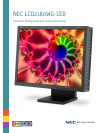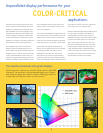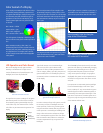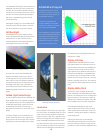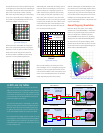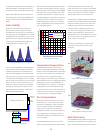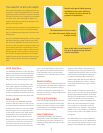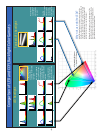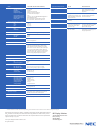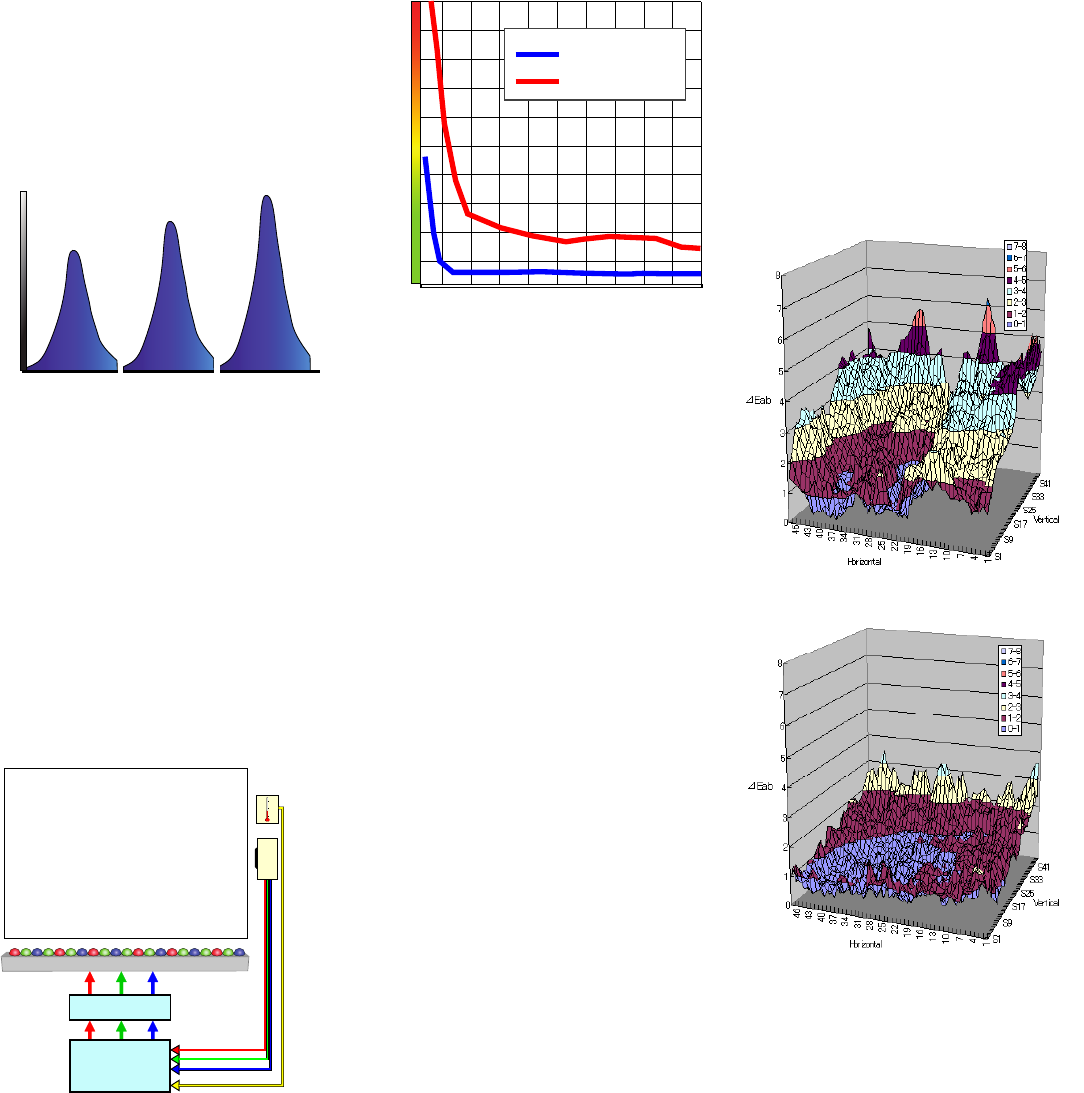
If necessary, custom gamuts can be achieved by
manual adjustment of the display using its ad-
vanced 6-axis color hue and saturation controls.
These controls allow the hue and saturation of
red, yellow, green, cyan, blue and magenta areas
of the color gamut to be manipulated indepen-
dently.
Color Stability
While LEDs have excellent light output and
lifetime characteristics, they are inherently
unstable devices and have very strong tempera-
ture and supply current dependencies. This would
normally make LEDs unsuitable for color critical
applications where a change in luminance of just
a fraction of a percentage would produce an
unacceptable color or luminance shift.
Therefore the LCD2180WG-LED display employs a
unique internal optical feedback system which
constantly measures both the luminance and
color of the LED backlight source and automati-
cally corrects for any short or long term changes.
This means that the backlight source is constant
and the screen can be used for critical color work
within a couple of minutes of powering on the
display. Short term changes such as the display
warming up, and longer term changes such as
aging decreasing the efficiency of the LED, are
automatically compensated for.
While other CCFL based LCD displays may claim to
have similar optical feedback systems, they typi-
cally only monitor the luminance of the backlight
source and not its true white point. CCFLs have
an operating temperature vs output color spec-
trum dependency which can produce a change in
the white point of the display as it warms up to
operating temperature; even if the overall lumi-
nance is compensated using a luminance based
optical feedback system.
Temperature Compensation
The LCD2180WG-LED features a unique tem-
perature compensation system that constantly
monitors the internal temperature of the display
and corrects for changes in the LCD panel color
characteristics due to temperature shifts as
well as changes in the sensitivity of the internal
optical feedback sensor. This compensation allows
the display to achieve an unparalleled level of
color stability even as it warms up to full operat-
ing temperature. This means that the display
can then be used for color critical work within a
couple of minutes of turning on, compared to up
to 30-60 minutes for conventional displays.
Mura Compensation
All display monitors have some form of screen
uniformity errors, or mura, across the display
area due to a combination of non-uniformities
in the LCD panel itself, and the LCD backlight
system. This non-uniformity can be seen as
combination of shifts in color and/or luminance,
which, depending on the severity, may be very
noticeable and appear as uneven areas of color
across the display.
The LCD2180WG-LED introduces a new screen
uniformity compensation and correction system
called ColorComp which aims to reduce any
screen uniformity errors to almost unnoticeable
levels. This system works by applying a digital cor-
rection to each pixel on the screen to compen-
sate for differences in color and luminance.
Each display is individually characterized during
production using a fully automated system which
measures hundreds of points across the screen
at different grey levels. These measurements
are used to build a three dimensional correc-
tion matrix for the display screen which is then
stored inside the display. This data is used to
compensate for the screen uniformity, not only as
a function of position on the display screen, but
also as a function of grey level.
If desired, the ColorComp correction can be
turned off in order to maximize the screen
brightness.
Dual Video Inputs
The LCD2180WG-LED has two DVI video inputs for
connecting to two different host computers. The
input can be switched with the touch of a button.
Time after power on (minutes)
White Point Deviation (Delta-E)
1051 2 3 4 6 7 8 9
LED Backlight monitor
CCFL Backlight monitor
10
5
1
2
3
4
6
7
8
9
Temperature
Sensor
Color
Sensor
LED Array
LED Power Driver
Microprocessor
Folded Light Guide and LCD Panel
Optical Feedback System
Color Stability Comparison
Example Uniformity Without Correction
Uniformity With ColorComp Correction
-20˚C+25˚C+85˚
Relative Intensity
Uncompensated Light Output vs Temperature
6



